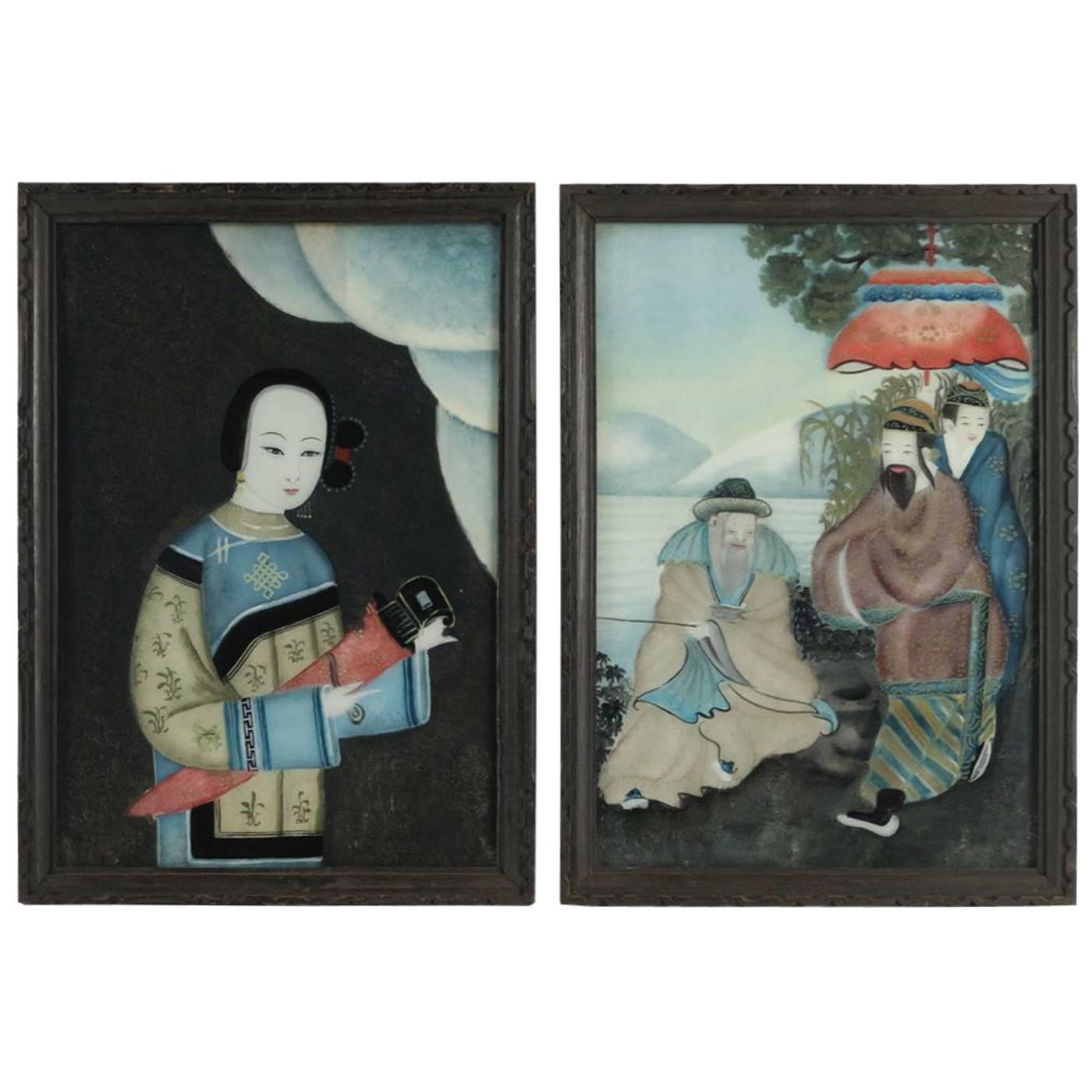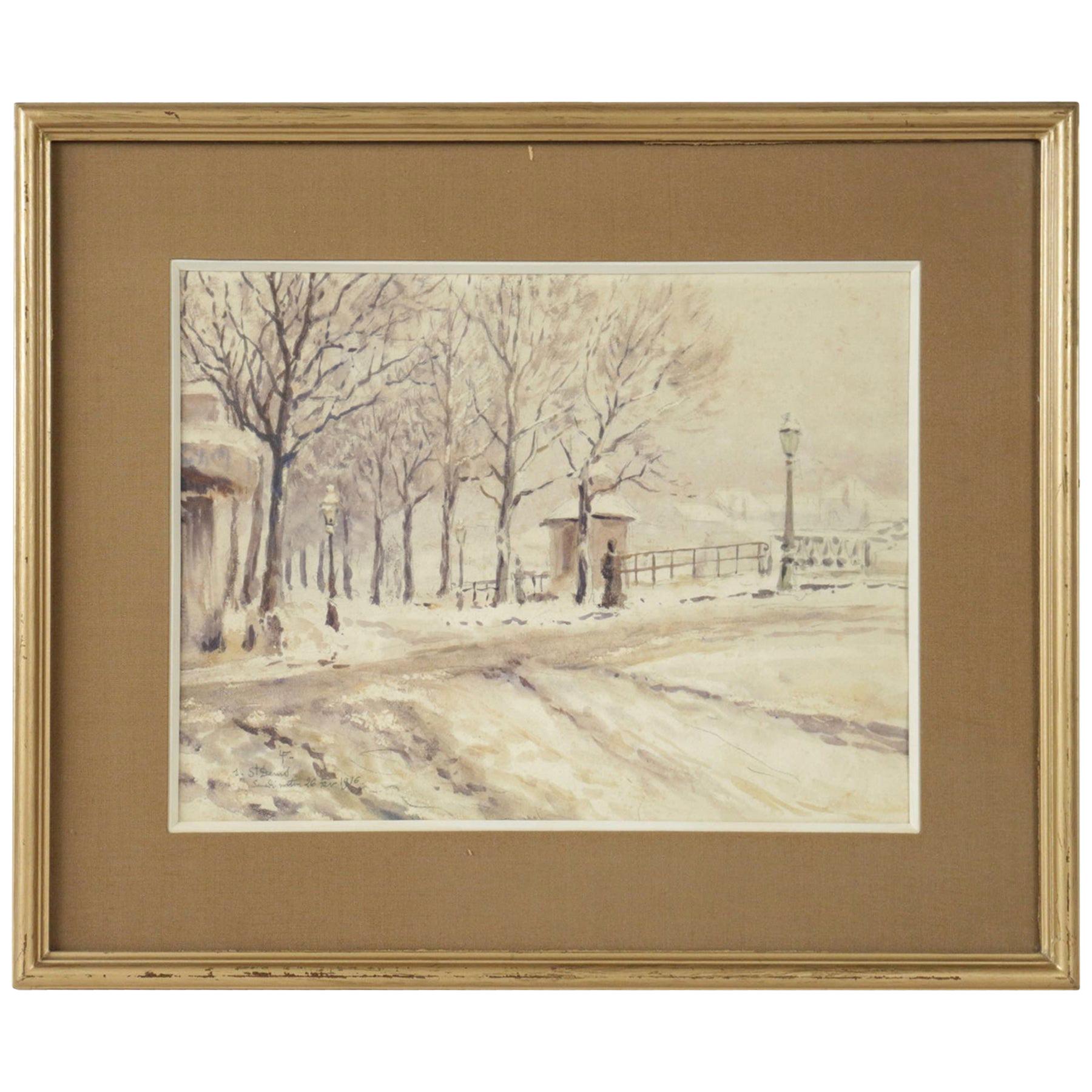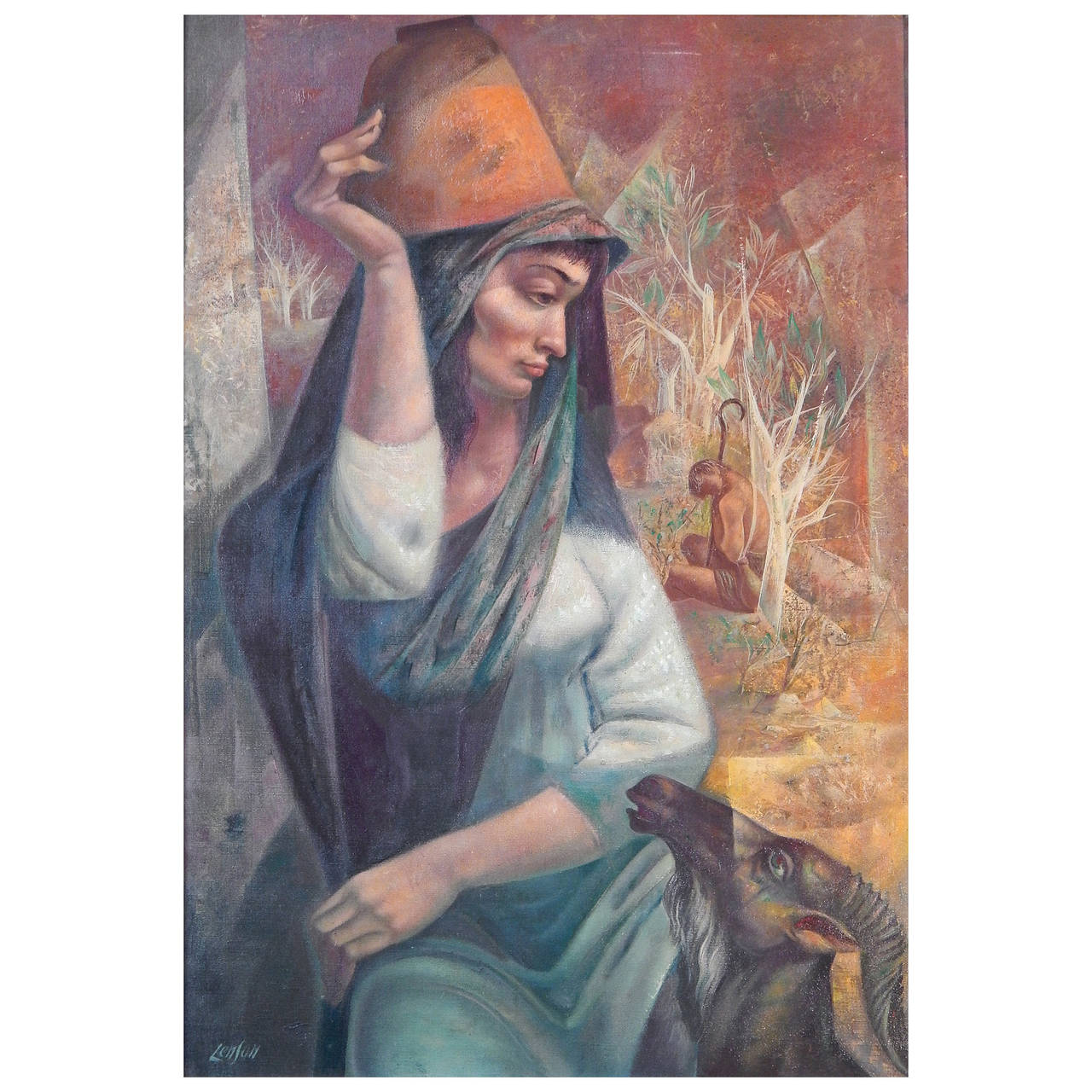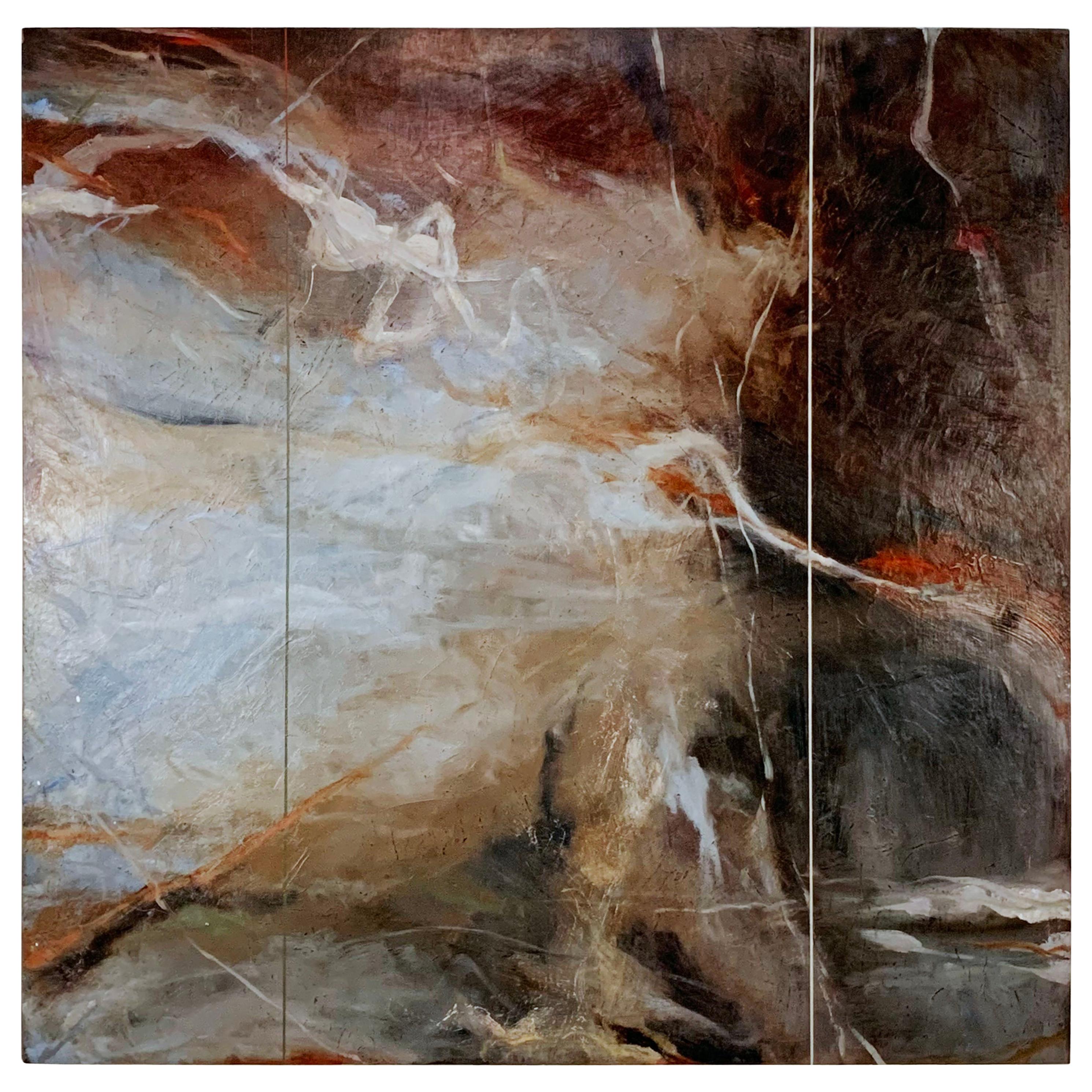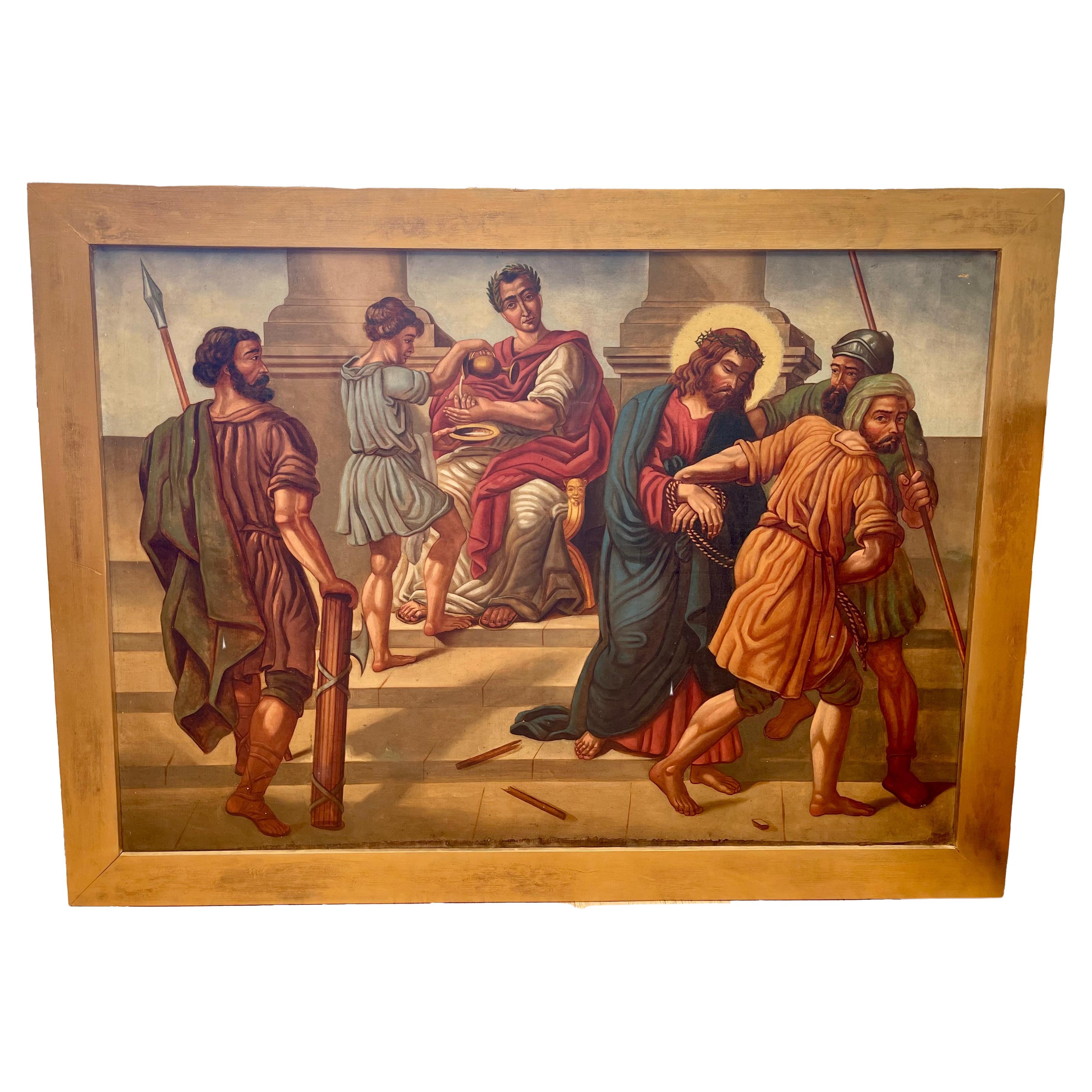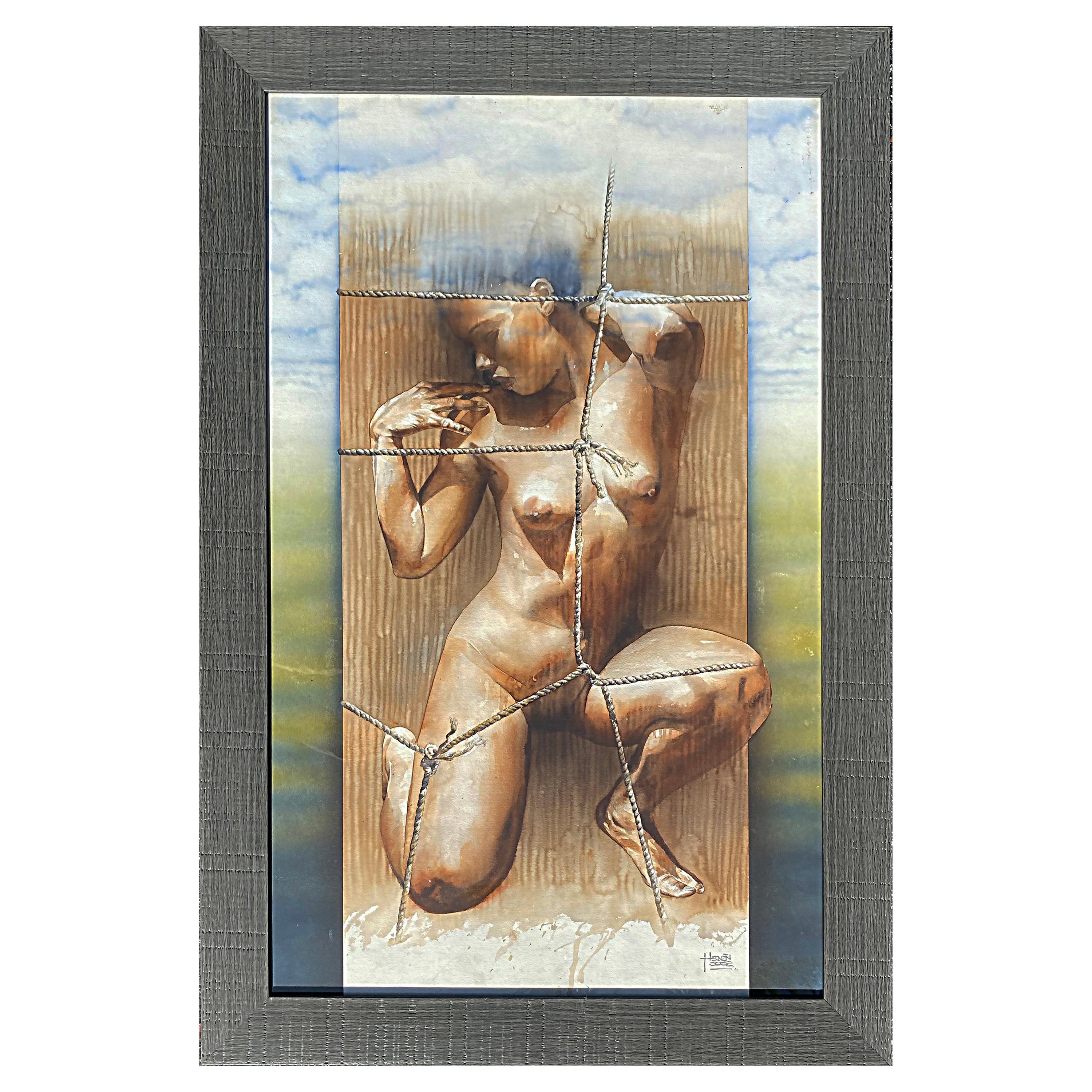Items Similar to Judgment of Solomon Painting under Glass
Video Loading
Want more images or videos?
Request additional images or videos from the seller
1 of 8
Judgment of Solomon Painting under Glass
About the Item
The Judgment of Solomon painting under glass according to an original drawing by Nicolas Poussin, dated 1649, in the Louvre Museum, Paris.
Portuguese School of the second half of the 18th century.
- Dimensions:Height: 19.1 in (48.5 cm)Width: 23.63 in (60 cm)Depth: 1.97 in (5 cm)
- Materials and Techniques:
- Place of Origin:
- Period:
- Date of Manufacture:1750-1790
- Condition:Minor losses.
- Seller Location:Lisboa, PT
- Reference Number:1stDibs: LU7365230451592
About the Seller
5.0
Vetted Seller
These experienced sellers undergo a comprehensive evaluation by our team of in-house experts.
Established in 2018
1stDibs seller since 2022
10 sales on 1stDibs
Typical response time: 13 hours
- ShippingRetrieving quote...Ships From: Lisboa, Portugal
- Return PolicyA return for this item may be initiated within 14 days of delivery.
More From This SellerView All
- Late XVIII Century Glass Painting of Sheperd on a Bucolic SceneLocated in Lisboa, PTShepherds and pastoral scenes have been popular subjects in art for centuries, appearing in various styles and mediums, including paintings, drawings, and sculptures. Artists often depicted pastoral landscapes with shepherds tending to their flocks, conveying themes of simplicity, harmony with nature, and rural life. Pastoral art...Category
Antique Late 18th Century French Paintings
MaterialsGlass, Wood
- 18th Century Oil on Wood Paintings of AngelsLocated in Lisboa, PT18th Century Oil on Wood Paintings of Angels.Category
Antique 18th Century Portuguese Paintings
MaterialsOak
- Portrait of D. Maria Bárbara De Bragança, Circle of Louis-Michel Van LooBy H. van LoonLocated in Lisboa, PTPORTRAIT OF D. MARIA BÁRBARA DE BRAGANÇA (1711-1758), QUEEN OF SPAIN Circle of Louis-Michel van Loo (1707-1771) Oil on canvas Her Royal Highness, the Infanta Maria Barbara of Braganza (1711-1758) was the first-born child of King John V of Portugal (1689-1750) and his queen consort Maria Anna of Austria (1683-1754). Born in December 1711, she had the Convent Palace of Mafra built in her honour following a vow made by her royal father. Her status as Princess of Brazil, inherent to 18th century Portuguese presumptive heirs, would however be superseded once the queen gave birth to two male princes, D. Pedro (1712-1714) and D. José (1714-1777), preventing her from ascending to the throne. Daughter of one of the most illustrious monarchs of his time, Maria Barbara was carefully educated to become a fond admirer of the arts, and of music in particular, having had the Italian composer Domenico Scarlatti (1685-1757) as her music teacher. On the 10th January 1723 the young princess was betrothed to the Infante Ferdinand of Spain (1713-1759), eldest son of King Philip V (1683-1746). Six years later, on the 19th January, she entered her new country in a carefully choreographed ceremony that became known to history as the “Exchange of the Princesses”. This unique event took place on a specially built Bridge-Palace, a wooden, luxuriously decorated structure that included various modules and rooms, on both banks of the river Caia, the natural border between the town of Elvas in Portugal and of Badajoz in Spain. Simultaneously, on the same day that the Portuguese Infanta crossed the border to marry the Spanish Crown Prince, her new sister in law, the Infanta Mariana Victoria of Bourbon (1718-1781), her husband’s sister, crossed the same bridge in the opposite direction to marry Prince D. José, the Portuguese heir to the throne. Once married, Maria Barbara would spend 17 years as Princess of Asturias, only becoming Queen of Spain at her husband’s accession following the death of Philip V in 1746. She is portrayed in the 1743 painting by Louis-Michel van Loo (1707-1771) now in the Prado Museum, in which Philip V had himself represented with all his close family. The new Queen would take an important role at court eventually becoming the liaison between her husband and the King of Portugal, particularly throughout the negotiations for the Treaty of Madrid (1746-1750). Maintaining her interest in music, she patronized the Italian castrato singer Farinelli (1705-1782) while remaining close to her old master Scarlatti, having herself composed some sonatas for a large orchestra. She would also commission and fund the building of the Royal Salesians Monastery complex in central Madrid, where both her and Ferdinand VI are buried. The portrait we are presenting for sale shows the Queen in half-length, turning left at three quarters. She is wearing a blue low-cut dress embroidered with flowers and foliage, over a lace cuffed white blouse, and an ermine cloak pined on the left-hand side by a diamond broach. The powdered hair style is held sideways by a seven diamond and black plume headdress and topped by a small gold and pearl crown. The right arm rests on a cushion while the left hand, at chest height, holds a miniature male portrait. The Infanta’s features are analogous to the 1725 portrait by the painter Domenico Duprà (1689-1770), also in the Prado Museum collection. Further similarities can be found in another portrait by Louis-Michel van Loo, in which a seven diamond and black plume headdress is also present. In this work, the cushion supporting Maria Barbara’s right arm has also some obvious similarities to our painting. The same diamond headdress reappears in Van Loo’s above-mentioned portrait of Philip V’s family dated from 1743. It is nevertheless in Lisbon’s Ajuda National Palace that it is possible to find an almost identical depiction of the Infanta holding a miniature portrait of her husband. In it, the future Ferdinand VI is portrayed facing right at three quarters and wearing a curly wig, suit of armour, the golden fleece insignia and a blue band, in a composition that closely resembles an 18th century Spanish school painting that appeared in the art market in January 2016. Another detail common to various portraits of the Portuguese Infanta and Queen of Spain is the small gold and pearl crown on her head. In another Van Loo painting, also from the Prado Museum, in which Maria Barbara is portrayed as Queen, this crown is represented together with a headdress similar to the one previously described. Another two paintings by the same artist, at the Royal Academy of Saint Ferdinand, include the same ornament. We must also refer the paintings by the artist Jean Ranc (1674-1735). In one, dating from 1729 (Prado Museum), the Infanta is depicted outdoors holding a flower bouquet and wearing a yellow silk dress with red cloak, and a set of diamond and ruby jewellery that includes a headdress similar to the one present in our portrait. Another work by the same artist, belonging to the Complutence University of Madrid, depicts the Infanta sumptuously dressed in identical colours to our painting and wearing an elaborate headdress and diadem. These portraits, beyond their iconographical importance as contemporary records of the Infanta and Queen Maria Barbara, are also illustrative of 18th century fashion for jewelled head dressing. Often, flowers were combined with joyful adornments, composing almost theatrical displays that would reinforce the ostentatious nature of the image. The ornamental flowers and the chromatic character of the jewels would complement the luxury of the colourful dresses in blue, crimson, green or other silk shades, in compositions whose sole purpose was to highlight a royal sitter’s wealth and power, becoming an essential statement accessory within the strict court protocols and codes of conduct. Circle of Louis-Michel van Loo (1707-1771) Slowly but steadily, the resolute, tranquil and dignified attitude of Renaissance and Baroque portraiture becomes artificial and presumptuous. Mid 18th century society favours elusive expression and psychological deepness, albeit limited to the face, that, with emphasis on detail, on the rich colour palette and on changing costumes and landscapes, associated to the courtliness of gestures, creates a strongly artificial environment while maintaining a highly poetic intrinsic character. Louis-Michel van Loo followed a dynasty of famous Dutch origin artists that had settled in France. Initially taught by his father, Jean-Baptiste von Loo (1684-1745), the younger van Loo studied in Turin and Rome and frequented the Paris Academy. In Rome he worked with his uncle Charles-André van Loo (1705-1765) and become a painter for the Turin Court. In 1737 he arrived in Spain being summoned by Philip V to succeed Jean Ranc as painter of the king’s chamber. In Madrid, his work covers the numerous Court commissions and the Royal Saint Ferdinand Fine Arts Academy, of which he was a founding member and director for the Painting department in 1752. Is production at court consisted essentially of numerous portrait paintings, often Royal gifts...Category
Antique 18th Century Spanish Baroque Paintings
MaterialsCanvas
- XX Century Wall Decoration in Style of PompeiiLocated in Lisboa, PTThe ancient city of Pompeii was founded sometime around the 7th or 6th century BCE by the Oscans, an Italic tribe that inhabited the region of Campania in what is now southern Italy....Category
Mid-20th Century European Paintings
MaterialsCanvas
- Set of Four Panels by Fabrique Par J. Zuber Et CieLocated in Lisboa, PTSet of four panels, mounted in mdf (two lateral and two central) Decorated with wreaths and other floral motifs. Central panels decorated with medallions in shades of blue, representing landscapes Edition from 1804 to 1904, with maker's mark on base "J. Zuber et Cie" With the following references - 10284 (left side panel); 10290 (center panel); 10286 (center panel); 10292 (right side panel) (minor defects). Dim.: 262 x 56 cm (each lateral panel) 262 x 91 cm (each central panel) The Zuber factory is a French company specialized in the production of high quality wallpapers. Founded in 1797 by Jean Zuber, it is located in Rixheim, Alsace, France, and is one of the oldest wallpaper mills in continuous operation. Zuber is known for panoramic wallpapers, which are wallpaper panels that depict landscapes or detailed scenes on a large scale. These panoramic wallpapers are produced using hand-engraved wooden block printing techniques, resulting in high-quality pieces and artistic detailing. The Zuber factory is also known for its extensive collection of historical wallpaper designs, many of which are based on classic designs of the XVIII and XIX century. They have been used in many prestigious locations around the world, including royal palaces, private residences and museums, and are considered pieces of decorative art. The production of Zuber wallpapers involves a highly specialized process, which includes the careful selection of materials, the preparation of the printing blocks, the application of colors through traditional printing techniques, and the finishing of the wallpapers in a slow and careful drying process. Each wallpaper is a unique and handmade work of art, produced with attention to detail and quality. Zuber wallpapers are highly valued by collectors, interior designers and decoration lovers from all over the world due to their artistic quality, historical authenticity and exclusivity. The Zuber factory continues to be an iconic example of excellence in the production of luxury...Category
Antique 19th Century French Neoclassical Paintings
MaterialsLacquer
- Portrait of Lars Gathenhielm '1689-1718' in Gilded Worked FrameLocated in Lisboa, PTEuropean workshop XVII century Portrait of Lars Gathenhielm (1689-1718) Oil on canvas Unsigned Lars Gathenhielm (1689–1718), was a Swedish sea captain, commander, shipowne...Category
Antique Late 17th Century Swedish Rococo Paintings
MaterialsCanvas
You May Also Like
- Pair of 19th Century Asian Painting under Glass of Superior QualityLocated in Saint-Ouen, FRPair of 19th century Asian painting under glass of superior quality Measures: H 56cm, L 40cm, p 3cm.Category
Antique 1880s Asian Napoleon III Paintings
MaterialsGlass
- Painting under Glass from the Beginning of the 20th CenturyLocated in Saint-Ouen, FRPainting under glass from the beginning of the 20th century representing the countryside of Saint-Denis.Category
Early 20th Century French Arts and Crafts Paintings
MaterialsPaper
- Mid Century Painting with "Song of Solomon" Theme, by LensonBy Michael LensonLocated in Philadelphia, PAEntitled "Return, Return, O Shulemite," with a scene taken from the Song of Solomon, this painting depicts the legendary wife of King Solomon, who was ...Category
Vintage 1950s American Mid-Century Modern Paintings
- Atmospheric Abstract Postmodern Painting by Judith SolomonLocated in Peabody, MAAtmospheric faux-triptych Postmodern abstract painting by noted Massachusetts artist Judith Solomon dated 1998. There is an almost romantic appeal to th...Category
1990s American Post-Modern Paintings
MaterialsPaint
- Large Religious Painting: The Judgment of Jesus by Pontius Pilate, 19th CenturyBy Ecole de FountainebleauLocated in LA FERTÉ-SOUS-JOUARRE, FRThis magnificent 19th-century painting depicts the first act of the Christian journey, the Judgment of Jesus Christ by Pontius Pilate. It stands out as an exceptional work due to its...Category
Antique 19th Century French Neoclassical Paintings
MaterialsCanvas
- Hernán Sosa Nude Watercolor Painting on Paper Framed Under Glass #2By Hernan SosaLocated in Miami, FLHernán Sosa Nude watercolor painting on paper framed under glass Offered for sale is an original watercolor painting on paper framed und...Category
Late 20th Century Peruvian Modern Paintings
MaterialsGlass, Wood, Paper
